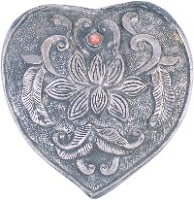First, a NOTICE: I have now twice mis-stated the date on which Risky Regencies’ JANE AUSTEN MOVIE CLUB will discuss the Olivier/Garson Pride & Prejudice! (Careless. Sorry.)
The correct date is Tuesday, March 4. (I kept saying Tuesday, March 3, which doesn’t exist. In this universe, anyway.)
(For those of you joining us for the first time: the Jane Austen Movie Club meets here the first Tuesday of every month, and sometimes on other Tuesdays, to discuss various Jane Austen TV and movie adaptations. Please join us!)
Second, a CLARIFICATION: Those of you who get our brilliant newsletter might have received the implication that our discussion of this same Olivier/Garson Pride & Prejudice will follow the airing of it on PBS.
Sadly, this is not the case. They’re not airing it. (Though if you ask me, they should just stop showing all that other silly stuff and become the All Jane Austen All the Time network…) So if you’d like to participate in our discussion, you can either do it from memory, or track down a copy of the DVD or tape within the next two weeks… Or just stop in and say hi!
 Third, a QUESTION: The BBC Emma (with Kate Beckinsale) airs March 23. I had originally not scheduled it for discussion on the following Tuesday (March 25) because if we run through too many Austen adaptations too quickly, we’ll run out of things to discussion in the Club and the Club will have to end sooner.
Third, a QUESTION: The BBC Emma (with Kate Beckinsale) airs March 23. I had originally not scheduled it for discussion on the following Tuesday (March 25) because if we run through too many Austen adaptations too quickly, we’ll run out of things to discussion in the Club and the Club will have to end sooner.
Then again, we could always talk about adaptations of the Scarlet Pimpernel, Sharpe, Hornblower, etc… And the advantage of discussing it on March 25 is that it will be fresh in everyone’s minds…that is, if they’ll be watching the showing on PBS.
So: what’s your vote? Beckinsale Emma on March 25, or not?
And now, fourth, so that this post won’t be entirely full of information and other tedious stuff, here is part of an actual 1804 NOTICE OF HORSES FOR SALE:
TO BE SOLD AT LEWES, ON THE FIRST OF AUGUST
Being the vacant Day between BRIGHTON and LEWES races.
LOT 1: THE Stallion, Waxy, by Pot8o’s, out of Maria, by Herod, her dam, Lisette, by Snap, out of Miss Windsor. He is sire of Mr. Wilson’s colt, that was second for the Derby Stakes.
LOT 2: Kezia, by Satellite, out of Waxy and Worthy’s dam, &c. &c. with a colt at her foot by Waxy, and covered by him again.
Long live the Regency!
Cara
Author of MY LADY GAMESTER, in which the horses had slightly less strange names than Pot8os)





















